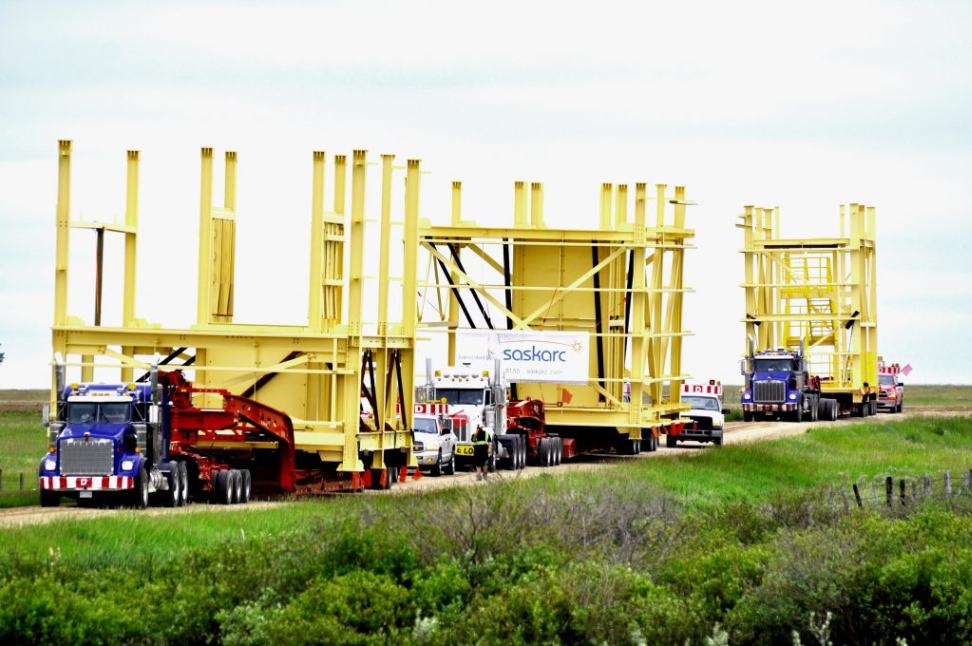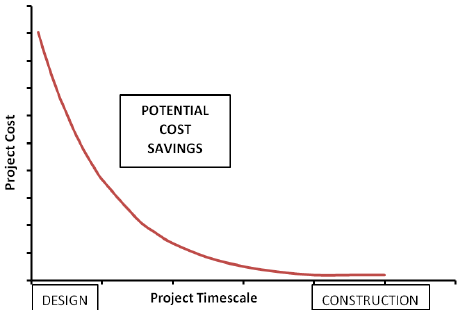
INTRODUCTION:
Whether it be a project in the mining, petrochemical, power generation, or any industry alike, several teams with different priorities and responsibilities, all work to achieve a common goal. A constant across all the teams, including the Owner at the top, down to the Engineering Procurement Construction (EPC) firms, to the fabrication & modularization companies, transportation companies and site contractors, is that they all want project success. Ultimately a project is successful if it is completed safely, on time and on budget.
Traditionally, each key stakeholder has remained in their own silo, working diligently to complete their scope of work within the framework of the project without much knowledge of what the others are experiencing. There has been a recent paradigm shift in the industry brought on by a new concept called Early Contractor Involvement. This concept challenges key stakeholders to break down these silo walls and begin communicating and collaborating with one another, early on in the project lifecycle. This means that everyone has a big picture view of the major project milestones and a deeper understanding of each other’s roles and responsibilities. Like any new and unfamiliar territory, there are a few misconceptions about Early Contractor Involvement (ECI) and its value.
In this post we dive into five common misconceptions surrounding ECI to provide clarity and explain how this concept can add value to the overall success of a project.
#1. Contractors want to take over more project responsibility
This is definitely not the case.
As does everyone, field contractors, freight companies, and metal fabricators already have their fair share of responsibility within large-scale metal fabrication projects. Contractor support for Early Contractor Involvement stems not from the desire to take on more work or control of a project, but rather to ensure their part of the project is set up for success.
Including contractors from the moment an owner sanctions a large-scale project allows for a range of expertise to fully inform the overall design concept. When each project stage – transportation, design, engineering, procurement, construction – is guided from the get-go by comprehensive contractor knowledge, the groundwork is laid and everyone approaches the project with all the details that they need to make informed decisions. All stakeholders are then able to execute at the highest levels (and usually the lowest costs and shortest time frames) as the project progresses.
#2. Contractors don’t know engineering
They may not BE engineers…
BUT, their work involves direct interaction with complex engineered design concepts and a lot of highly skilled engineers. This extensive field experience gained by contractors is invaluable to cost-conscious owners of custom metal fabrication projects.
When owners adopt ECI during a pre-feasibility study or a feasibility assessment they open the door for contractors to recommend field-tested tactics. The tactics employed by contractors in the field may be unknown to other stakeholders but can be big sources of potential cost-savings. Things like suggestions for sufficient and substantiated contingency plans related to materials or fabrication design can be extremely beneficial for owners to be aware of from the outset. This ECI may eliminate additional design changes down the road or costly rework.
(Photo of Headframe sections shipping to site)
Take this project that Saskarc completed for a local potash mine, as an example. The owner’s procurement strategy was originally to have the project erected as stick steel and have it built in the field, forcing construction to happen throughout the cold winter months. As the habitual procurement process unfolded, Saskarc, the fabricator, was brought in after the design was complete to perform connection design, detailing, supply, fabrication and painting of structural steel and platework. Upon reviewing the designs, Saskarc proposed a modular approach and suggested that the structural steel should be pre-assembled into 3 structural sections and shipped to site for installation. After weighting the two options, the the client went with the modular approach in order to reduce site work, avoid weather delays, firm up the schedule and reduce costs.
Saskarc worked closely with the engineer to redesign the column splice locations so that the modules would meet the height restrictions of the power lines for transportation. The components went together in a matter of weeks, not months and the owner was extremely impressed with the end result. Ultimately, it was a lesson learned for the owner. If the contractor would have been involved earlier on in the design process and been able to suggest a modularized design from the beginning, the redesign costs could have been avoided.
#3. Approved design plans always consider every aspect of a project
As the project example above just demonstrated, this is not necessarily the case.
The fabrication and modularization of large-scale metal fabrication projects requires insight from many experts prior to implementation. Here are a few critical elements that may be overlooked by the engineer in the design stage:
- Shipping envelope restrictions
- Up to date production timelines for fabrication elements
- Material availability and delivery timelines
- Fabrication best practices
Each stakeholder has a wealth of technical and practical experience in their respective fields and ECI encourages everyone to share their expertise, so project optimization can be achieved.
#4. Contractors are only needed once engineering is underway or complete
Nope. The earlier bird still gets the worm.
Creating the optimal schedule for all the moving parts of heavy fabrication projects is challenging to say the least. And it can become extremely difficult to manage without the input from contractors during initial phases. The earlier contractors can provide practical scheduling suggestions, the better.
Job sequencing and logistics for any large-scale fabrication project is incredibly important. When contractors carry out, or participate, in feasibility assessments all stakeholders are apprized early on of how each of their roles can potentially impact project timelines.
This approach results in strong relationships between all the equipment suppliers, freight companies, fabricators and subcontractors and can ensure that plans, equipment, and materials will be delivered safely and on schedule.
#5. Early Contractor Involvement adds huge costs to a project
Quite the opposite is true in fact.
Catching a design concern, a transportation issue, or recommending a field-tested tactic early in a project can have a huge impact that can lead to major cost-savings.
ECI can be, but is not always a “free” approach for owners. However the minimal, and often reimbursable, investment in this approach can add huge value. Mitigating risk, and the potentially huge associated costs, as well as reducing costs via the introduction of design efficiencies should make the adoption of ECI and any related financial expenditures an easy decision for owners to make.
CONCLUSION:
Now that we’ve provided more clarity on Early Contractor Involvement, we hope you can now see the value that ECI can deliver to your large-scale industrial project!
At Saskarc, we strongly support ECI and welcome the chance to participate early on in pre-feasibility studies or to execute a specific feasibility assessment for fabrication and modularization. We provide a range of assessment services from complimentary expert evaluations to seconding a technical expert to the owners engineering office to serve as an extension of an engineering team, for providing a project constructability review. Our on-site experts can work directly with owners or EPC firms in full project walkthroughs.
Tell us about your project on the horizon, let us know. We’d be excited to work with your team to complete an initial feasibility assessment.
Request an assessment below!





